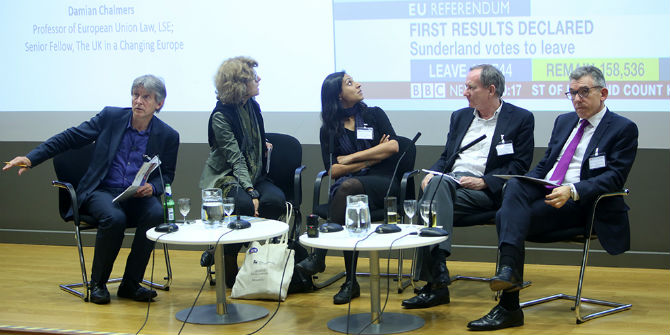 Many Polish nationals – lots of them women – left the country for the UK after 2004. Eva A Duda-Mikulin (University of Bradford), the author of a new book on the subject, says the Polish government needs to understand the reasons why women moved, while Britain should acknowledge the role they have played in mitigating the demands of an ageing society.
Many Polish nationals – lots of them women – left the country for the UK after 2004. Eva A Duda-Mikulin (University of Bradford), the author of a new book on the subject, says the Polish government needs to understand the reasons why women moved, while Britain should acknowledge the role they have played in mitigating the demands of an ageing society.
Poland underwent huge upheaval during the 1990s. After the transformation of 1989 and a transition to free-market capitalism, the gap between the rich and the poor grew bigger, the unemployment rate climbed and social trust declined. In 2004, when Poland was admitted to the EU, the unemployment rate stood at over 20 per cent. By 2009 it had decreased to just under 11 per cent. Emigration played a major part in this fall.

In comparison, in the mid-1990s and early 2000s the British economy was experiencing significant economic growth, with less than 5 per cent unemployment in 2004 and substantial labour shortages. Today, unemployment stands at 4.5 per cent in Poland and 4.4 per cent in the UK. This explains the extensive migration following accession in 2004 – and may also suggest an increased willingness to return to Poland today.
In EU migrant workers, Brexit and precarity: Polish women’s perspectives from inside the UK, I focus on post-2004 migration between Poland and the UK. In 2004, the EU15 were joined by ten new, predominantly Central and Eastern European countries (the A8). Migration from the A8 to the UK has been identified as one of the most significant social phenomena of recent times. In fact, the UK has never experienced as significant a flow of people as it did post-2004. Furthermore, Polish nationals migrating to the UK after 2004 constitute the largest A8 immigrant community. In 2010, their number was around 550,000. That figure increased to 658,000 in 2011 and to 713,000 in 2012.
Polish migrants’ contribution to the British labour force is confirmed by the 91,560 UK National Insurance Numbers (NINos) issued to Polish nationals between June 2013 and June 2014. Poland held the top position in terms of NINos allocated to foreign-born individuals. By 2017, 74 per cent of NINos were allocated to residents from the EU, and Poles’ position had dropped to second (behind Romania). Nonetheless, from mid-2016 to mid-2017 Poland was the most common country of birth for the overseas-born population of the UK, with more Polish women (a ratio of 467:439) than men moving primarily for work-related reasons.
Despite the fact that post-2004 Polish migration to the UK has been studied extensively, there is a lack of comparative data on EU migrants’ experiences from before and after the EU referendum. Although gendered studies of migration are now gaining recognition, there is limited literature in relation to Polish women. Traditionally there has been a male bias in social research and migration, and comparative social policy often relies on secondary data rather than primary research. It is not that women are absent from migration theories, but that their portrayal is inadequate.
My book emphases the disparity between the image of an economic migrant in popular and public debates, and the lived experiences of women migrants. A lack of consideration for the needs of women is evident. Women (migrants) are not just care givers but paid workers, too. They are often intertwined in conflicting gendered expectations from two locations – the home and host countries. Economic migrants, too, are entangled in multifaceted familial and other relationships that are likely to complicate their entitlements to ‘settled status’, for instance. I argue that migration theorists should acknowledge women as migrants in their own right, and consider the gendered ‘responsibilities’ which may migrate with them.
The British government should recognise the vital roles migrants – and women migrants in particular – play in the British economy. EU migrants make a net contribution to the public purse. It is also crucial to acknowledge migrant women’s roles in ‘topping up’ the birth and fertility rates, since by doing so they slow down the progression to an ageing society. Further restrictions on welfare entitlements and benefit sanctions may reverse that. On the other hand, the Polish government should recognise that the outflow of vast numbers of mostly young and well-educated people is undoubtedly linked to their perception of Poland as a comparatively less attractive country, and to the relatively limited support from the Polish state. More family-friendly policies are needed in Poland, particularly given Poland’s decreasing birth and fertility rates.
This post represents the views of the author and not those of the Brexit blog, nor LSE.
Eva A Duda-Mikulin is a Lecturer in Inclusion and Diversity at the Faculty of Health Studies, University of Bradford.






